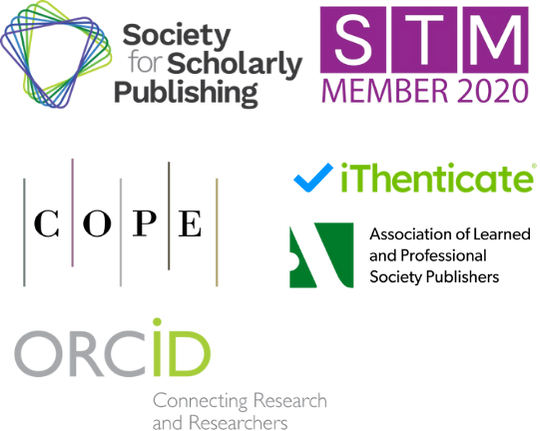Digital Credit Risk Management Systems and Solutions
DOI:
https://doi.org/10.71222/yzs0f406Keywords:
digital credit risk, machine learning, artificial intelligence, credit scoring, financial technology, risk assessmentAbstract
Digital transformation has fundamentally revolutionized credit risk management practices across financial institutions, introducing sophisticated technological solutions that enhance accuracy, efficiency, and decision-making capabilities in lending processes. This comprehensive study examines the evolution of digital credit risk management systems, analyzing the implementation of advanced machine learning algorithms, artificial intelligence technologies, and data analytics platforms that have transformed traditional credit assessment methodologies. Through systematic evaluation of contemporary digital solutions, this research reveals significant improvements in risk prediction accuracy, processing efficiency, and portfolio management effectiveness compared to conventional approaches. Digital credit risk systems demonstrate superior performance in detecting fraudulent activities, assessing borrower creditworthiness, and optimizing lending decisions through real-time data processing and predictive modeling capabilities. The study investigates various technological implementations including ensemble learning methods, deep learning architectures, and alternative data sources that enhance credit scoring precision while reducing operational costs by 35-50% and improving approval times by 70-85%. Furthermore, the research examines challenges associated with digital system implementation including data privacy concerns, regulatory compliance requirements, and model interpretability issues that influence adoption strategies. The findings demonstrate that organizations implementing comprehensive digital credit risk management solutions achieve substantial improvements in portfolio performance, risk mitigation, and operational efficiency while maintaining regulatory compliance and customer satisfaction. This analysis provides evidence-based insights for financial institutions considering digital transformation initiatives and offers practical recommendations for optimizing credit risk management through technology integration.
References
1. L. Yun, "Analyzing Credit Risk Management in the Digital Age: Challenges and Solutions," Econ. Manag. Innov., vol. 2, no. 2, pp. 81–92, 2025, doi: 10.71222/ps8sw070.
2. E. I. Altman and G. Sabato, "Modelling Credit Risk for SMEs: Evidence from the U.S. Market," Abacus, vol. 43, no. 3, pp. 332–357, 2007, doi: 10.1111/j.1467-6281.2007.00234.x.
3. S. Lessmann, B. Baesens, H.-V. Seow, and L. C. Thomas, "Benchmarking state-of-the-art classification algorithms for credit scoring: An update of research," Eur. J. Oper. Res., vol. 247, no. 1, pp. 124–136, 2015.
4. S. Yang, "The Impact of Continuous Integration and Continuous Delivery on Software Development Efficiency," J. Comput. Signal Syst. Res., vol. 2, no. 3, pp. 59–68, 2025, doi: 10.71222/pzvfqm21.
5. T. Berg, V. Burg, A. Gombović, and M. Puri, "On the Rise of FinTechs: Credit Scoring Using Digital Footprints," Rev. Financ. Stud., vol. 33, no. 7, 2020, doi: 10.1093/rfs/hhz099.
6. J. N. Crook, D. B. Edelman, and L. C. Thomas, "Recent developments in consumer credit risk assessment," Eur. J. Oper. Res., vol. 183, no. 3, pp. 1447–1465, 2007, doi: 10.1016/j.ejor.2006.09.100.
7. L. Yang, "The Evolution of Ballet Pedagogy: A Study of Traditional and Contemporary Approaches," J. Lit. Arts Res., vol. 2, no. 2, pp. 1–10, 2025, doi: 10.71222/2nw5qw82.
8. X. Dastile, T. Celik, and M. Potsane, "Statistical and machine learning models in credit scoring: A systematic literature survey," Appl. Soft Comput., vol. 91, p. 106263, 2020, doi: 10.1016/j.asoc.2020.106263.
9. S. Finlay, "Credit scoring for profitability objectives," Eur. J. Oper. Res., vol. 202, no. 2, pp. 528–537, 2010, doi: 10.1016/j.ejor.2009.05.025.
10. D. J. Hand and W. E. Henley, "Statistical Classification Methods in Consumer Credit Scoring: a Review," J. R. Stat. Soc. Ser. A Stat. Soc., vol. 160, no. 3, pp. 523–541, 1997, doi: 10.1111/j.1467-985x.1997.00078.x.
11. B. Wu, "Market Research and Product Planning in E- commerce Projects: A Systematic Analysis of Strategies and Methods," Acad. J. Bus. Manag., vol. 7, pp. 45–53, 2025, doi: 10.25236/AJBM.2025.070307.
12. A. E. Khandani, A. J. Kim, and A. W. Lo, "Consumer credit-risk models via machine-learning algorithms," J. Bank. Finance, vol. 34, no. 11, pp. 2767–2787, 2010, doi: 10.1016/j.jbankfin.2010.06.001.
13. S.-M. Lin, "Analysis of service satisfaction in web auction logistics service using a combination of Fruit fly optimization algorithm and general regression neural network," Neural Comput. Appl., vol. 22, no. 3–4, pp. 783–791, 2011, doi: 10.1007/s00521-011-0769-1.
14. M. Malekipirbazari and V. Aksakalli, "Risk assessment in social lending via random forests," Expert Syst. Appl., vol. 42, no. 10, pp. 4621–4631, 2015, doi: 10.1016/j.eswa.2015.02.001.
15. A. I. Marqués, V. García, and J. S. Sánchez, "Exploring the behaviour of base classifiers in credit scoring ensembles," Expert Syst. Appl., vol. 39, no. 11, pp. 10244–10250, 2012, doi: 10.1016/j.eswa.2012.02.092.
16. L. Nanni and A. Lumini, "An experimental comparison of ensemble of classifiers for bankruptcy prediction and credit scoring," Expert Syst. Appl., vol. 36, no. 2, pp. 3028–3033, 2009, doi: 10.1016/j.eswa.2008.01.018.
17. G. Paleologo, A. Elisseeff, and G. Antonini, "Subagging for credit scoring models," Eur. J. Oper. Res., vol. 201, no. 2, pp. 490–499, 2010, doi: 10.1016/j.ejor.2009.03.008.
18. P. Pławiak, M. Abdar, and U. Rajendra Acharya, "Application of new deep genetic cascade ensemble of SVM classifiers to predict the Australian credit scoring," Appl. Soft Comput., vol. 84, p. 105740, 2019, doi: 10.1016/j.asoc.2019.105740.
19. M. R. Sousa, J. Gama, and E. Brandão, "A new dynamic modeling framework for credit risk assessment," Expert Syst. Appl., vol. 45, pp. 341–351, 2016, doi: 10.1016/j.eswa.2015.09.055.
20. L. C. Thomas, "A survey of credit and behavioural scoring: forecasting financial risk of lending to consumers," Int. J. Forecast., vol. 16, no. 2, pp. 149–172, 2000, doi: 10.1016/s0169-2070(00)00034-0.
21. B. Twala, "Multiple classifier application to credit risk assessment," Expert Syst. Appl., vol. 37, no. 4, pp. 3326–3336, 2010, doi: 10.1016/j.eswa.2009.10.018.
22. G. Verstraeten and D. Van den Poel, "The impact of sample bias on consumer credit scoring performance and profitability," J. Oper. Res. Soc., vol. 56, no. 8, pp. 981–992, 2005, doi: 10.1057/palgrave.jors.2601920.
Downloads
Published
Issue
Section
License
Copyright (c) 2025 Rui Xu (Author)

This work is licensed under a Creative Commons Attribution 4.0 International License.


